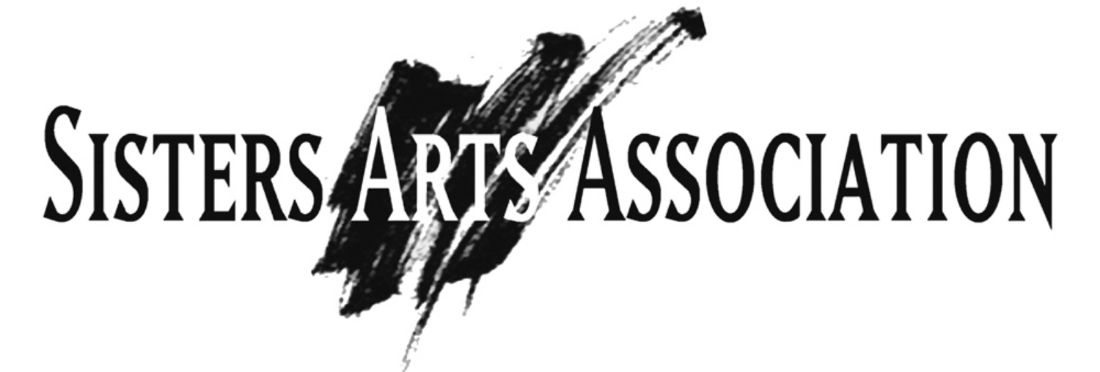When the world went into lockdown in mid-March of last year, people, when they did venture out of their homes, could be seen wearing masks of various kinds, and the masks caught the eye of Sisters artist Paul Alan Bennett. “My eye was drawn to the variety of masks, and in as much as they were awkward, there was both a strangeness and a sense of humor about them,” he said.
After much careful thought, Paul, a painter and a printmaker, decided to create portraits of people wearing their masks. And though he’s traditionally been known for creating colorful gouache paintings using a “knit stitch,” starry night skies, and mythology (as in his 2018 book, “Night Skies,”), and repurposing his art as clothing and Pendleton tapestries, this time Paul limited himself to one color – black – and one format, monotype. He created all of the images on the presses at Studio 6000, here in Sisters.
Paul’s first portrait was of a clerk at Ray’s Grocery. “When I posted it on Facebook, it got a lot of response, and I thought I’d do some more,” he said. “At first, I just did portraits of my fellow artists at Studio 6000 and then I expanded to the nearby coffeehouse Fika, the employees there, and people who would stop there for coffee.” Paul continued to make the portraits and post them to Facebook, where they continued to get positive response and build interest.
Paul always gets a person’s permission to take their photo with his cellphone, and after showing examples of the monotypes, they usually agree. “It’s become fun, and when I saw anyone who had a different kind of mask, or hairstyle, or who was doing something where I could include some elements of their work – whether in an auto shop or a bicycle repair shop – I incorporated that,” he said. Thus he has portrayed his doctor, May Fan, in her mask alongside a figure of a 17th Century plague doctor with his beaked mask, the beak that was filled with fragrant herbs to filter out the smell of death while protecting the all-important doctor; and his dental hygienist, Melissa, swathed in a halo of PPE.
“Every new piece gives me ideas for the next one,” he said. He has introduce elements like wind blowing through the hair, water in the splash pad, flames of wildfire, and hands raised in gratitude by a couple who narrowly escaped from their home in McKenzie Bridge. Animals joined their owners in several portraits: Kimry with her horse Dhiaa, Hattie with her sister’s chickens, Steve with his penguins, Danae with her sheep.
Each portrait led to another, then another, and by the time Paul had made 20, people began to suggest that he should do 40. At that point, the idea of publishing the collection in book form seemed quite possible. There are 88 portraits in the book, but he’s up to a hundred monotypes and still creating.
Paul has started a Kickstarter Campaign for this new book, Pandemic Portraits. You can support Paul’s Kickstarter Campaign at: kck.st/2KQTGfA (See Sidebar)
“Most of the people I interviewed started telling me how their lives had changed during the pandemic, and that became as much the subject of the book as the portraits,” he said. The portraits and text, together became the story of Sisters, a microcosm of a small community and how we’ve been affected by the pandemic. “I’ve tried to show visually and in story as many different angles as possible,” he said.
Asked if any of his subjects objected to the masks, he nodded. One gentleman complained that he’s being “forced” to wear a mask in order to do his job. Not everyone appreciates the principle of masking up during this time. On the other hand, another subject told how she’s made and sold thousands of masks, raising enough money for a down payment on a home.
The idea of Pandemic Portraits is in no way designed to minimize the severity of the Novel Coronavirus, or its effects on individuals and society as a whole. “We hear tragic stories every day, so this is a different take, from an artistic point of view. I hope there’s some optimism in these images,” Paul said. As weeks of 2020 became months, Paul gave his imagination plenty of room, and allowed his subconscious to come up with ideas, sometimes surreal, in how he’s portrayed these people.
“While this book is quite specific to Sisters, it’s quite universal in its story, because this is happening in every community around the world. I’m not trying to paint a bleak, depressing portrait of what’s going on. I’m trying to show a variety of options as to how people are dealing with these times, and there’s tragedy and comedy combined,” Paul said.
Paul said that rather than becoming overwhelmed or depressed, many artists have used these times to become more expressive. The news, Paul said, becomes fodder for the imagination. He genuinely feels that whether it’s poetry, song, or visual arts, there will be great creativity as a result of this time, some of which we won’t know for a while. “Our searching can be a very healthy thing,” he said.
Pandemic Portraits is one story of our times. Paul says, “What I’m trying to do is see the story of these times, knowing this will pass soon. I want to capture it now. The masks are a kind of tribal unity that can be a bonding opportunity. Perhaps it’s like one of those science fiction movies,” he said.
“I know that for me, this has been the most creative time of my life,” he concluded.



